The Best Podcast Microphones for All Abilities and Budgets
This post is also available in:
Português
This is our definitive guide to the best podcast microphones around, for every budget & ability. Choose your gear, right here!
Why is a Good Podcast Microphone Important?
It might seem obvious, but it’s a question worth asking – Why bother investing in a good podcast microphone at all?
However you record, there’s no denying that a podcast recorded on a decent-quality microphone is massively more professional than someone blabbering away on a tinny headset mic.
After all, it’s the mic that captures your voice and translates it from physical sound waves into digital bits and bytes.
Just to let you know, all of the product links in this article are affiliate links. That means we get a small commission if you buy anything, but it doesn’t cost you any extra. Don’t worry; we’re always honest, open, and impartial with our reviews – we only recommend the good stuff – but this affiliate income helps us keep the site running.

Editor’s Note
Our ‘Best Podcast Microphones’ guide was originally written in 2013. We update this post periodically to reflect changes in technology, our recommendations, and because we’re always learning new things.
Should I Choose an XLR or USB Mic?
XLR and USB simply refer to the type of cable a mic plugs in with. XLR mics are considered to be the more professional, but many USB mics are good enough to go toe-to-toe with them these days. If you buy an XLR mic you’ll need some additional kit (like a USB Audio Interface, Mixer, or Podcast Recorder) to run it into, whilst USB mics work right out of the box. Some podcast microphones actually do both, though, so you can have the best of both worlds!
Should I Choose a Dynamic or Condenser Mic?
The terms “Condenser” and “Dynamic” refer to two different ways microphones are built, and function. Both types of mic have their potential pros and cons. Dynamic mics are often more durable and can handle high volumes without distortion. Condenser mics, on the other hand, are often capable of recording a more crisp and detailed sound. These are broad generalisations though, and there are always exceptions. Here’s our full guide to Condenser Vs Dynamic Mics in Podcasting for a deeper dive on the subject.
Best Podcast Microphones for All Budgets
We’ve organised this Best Podcast Mics roundup by cost to make your choice as easy as possible.
Budget Level Podcast Microphones for Under $100
A good podcast microphone can cost hundreds of dollars, but luckily there are a lot of much more affordable options.
Don’t let the term “Budget Level” put you off – I only recommend good quality kit! These are relatively cheap, though, and very easy to set up, so they’re well-suited for beginners. But, I know many a veteran podcaster that still uses this kit, even years down the road.
1. Samson Q2U
- Average Cost: $70 (check prices on Amazon)
- Connection: XLR & USB
- Function: Dynamic
- 👍 Pros: Our favourite podcast mic of all time
- 👎Cons: Can be difficult to buy in certain regions
Mục Lục
Our Rating: 4.6/5
The microphone that I often recommend people start off with is the Samson Q2U. This is a really versatile little beast, being both XLR and USB. It’s also a significant quality increase over a cheap headset mic or your internal microphone.
The dual output (XLR & USB) means that you can plug it directly into your computer via USB, recording to Garageband or Audacity. Or, use that USB mic to run an online call with remote guests.
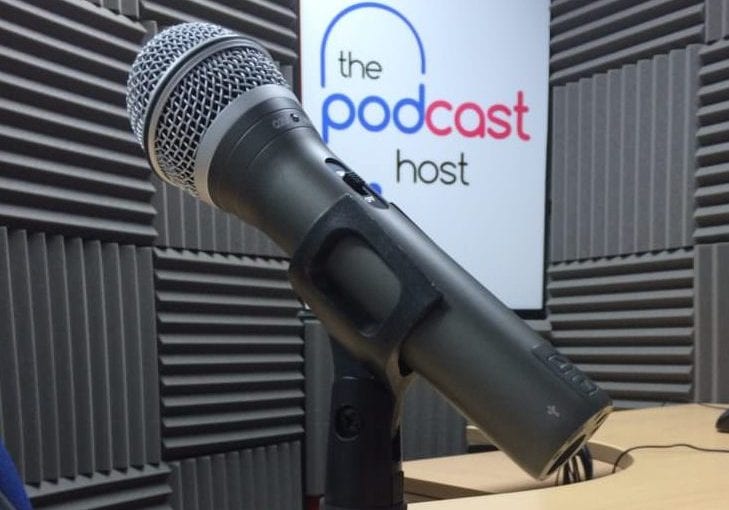
Then later on in your journey, when you get yourself an audio interface or a decent digital recorder, you can change to XLR. The other benefit of the Q2U’s dual output is that you can easily back up your recordings. This means even if one device crashes or runs out of batteries, you’ve still got a copy of your session.
2. ATR2100
- Average Cost: $80 (check prices on Amazon)
- Connection: XLR & USB
- Function: Dynamic
- 👍 Pros: Almost identical to the Samson Q2U
- 👎Cons: Similarly, availability can vary depending on your region
Our Rating: 4.5/5
An alternative, and very similar mic, is the ATR2100. There’s not much to tell between the two, and it all comes down to availability. Depending on where you are in the world, one might be easier to find than the other.
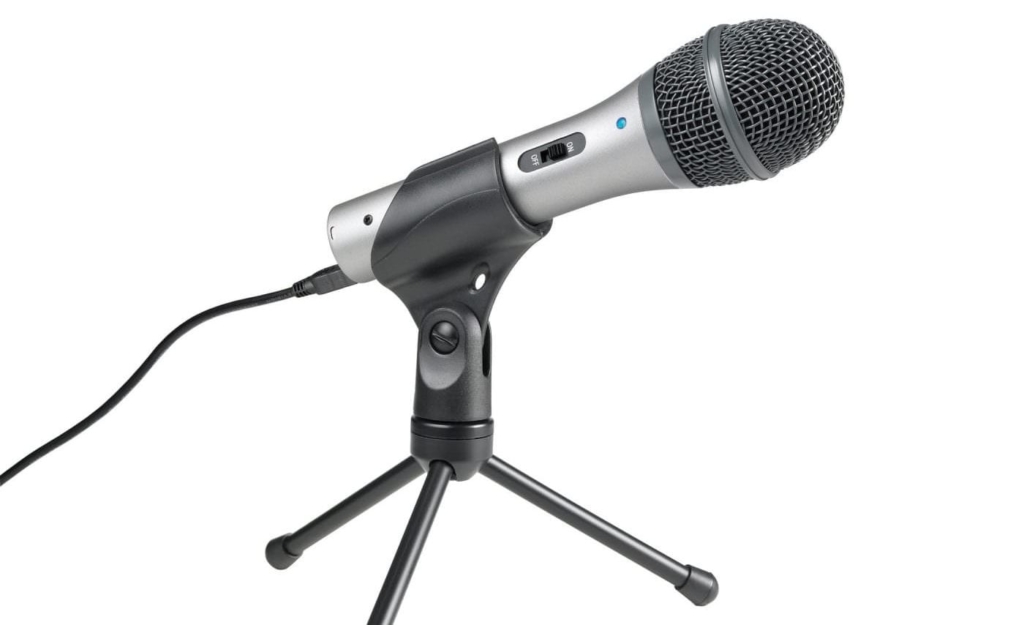
These mics are ideal for heading out and about, capturing live audio interviews.
3. Rode Smartlav+
- Average Cost: $53 (check prices on Amazon)
- Connection: 3.5mm
- Function: Condenser
- 👍 Pros: Super portable, fits in your pocket
- 👎Cons: Sound quality isn’t as good as most XLR or USB mics
Our Rating: 4/1
The Rode Smartlav+ is a lavalier or tie-clip mic, specifically built for smartphones. It works like a dream on any modern phone with a 3.5mm input (or a 3.5mm > lightning adapter for new iPhones).
I love this little mic for two main reasons:
- It’s tiny! You can have it in your bag ALL the TIME, for just-in-case interviews.
- For a minuscule little package, it sounds great.
Even better, the Rode Smartlav+ can be bundled with the SC6 adapter to plug a pair, of mics into one Smartphone.
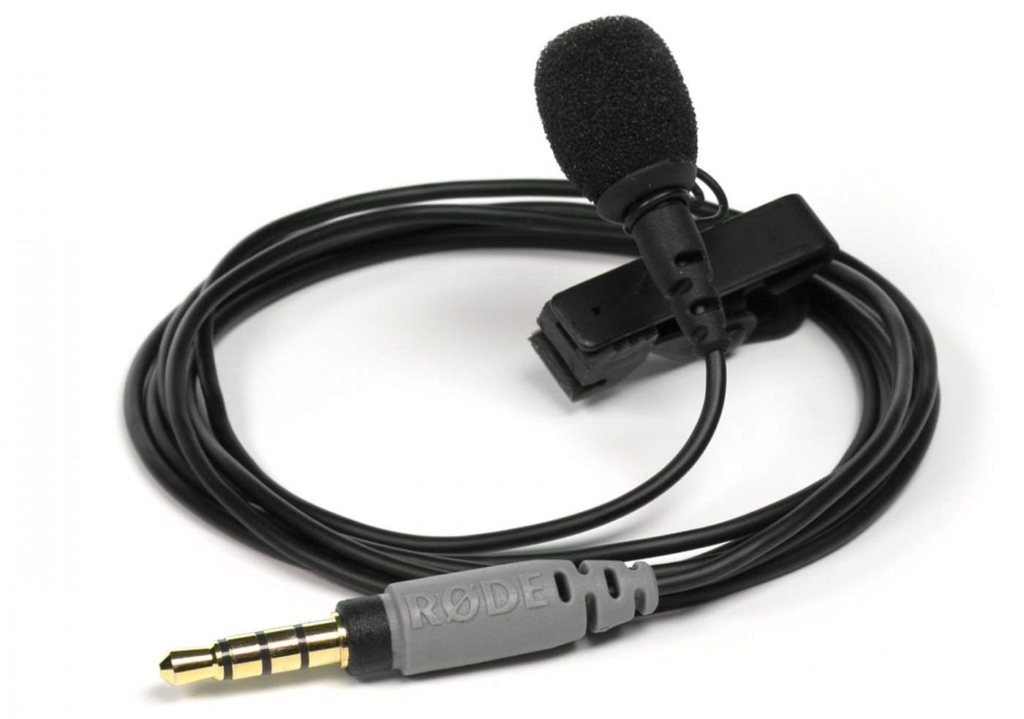
Because of this versatility, suddenly, you have an on-the-go in-person interview kit that’s smaller than your wallet! Just bumped into Prince Harry in the street? Well, whip out your smartlavs and grab a great quality interview on exactly what it’s like to be that famous for no particular reason.
4. The MXL990
- Average Cost: $70 (check prices on Amazon)
- Connection: XLR
- Function: Condenser
- 👍 Pros: Great audio quality at a very low cost
- 👎Cons: Quite fragile, and needs a boom arm to mount it
Our Rating: 4.2/5
The MXL990 was the first condenser mic that I owned, and I loved it. I used it for all of my recordings for about two years. It’s ridiculously good value at about $70 and it was worth every penny at the time. Even though it’s a condenser, it was decent in a normal office room, not picking up too much of the room noise. So this is a good choice if you have a reasonably quiet space, and you’re looking for a rich sound on a budget.
5. The Shure SM58
- Average Cost: $99 (check prices on Amazon)
- Connection: XLR
- Function: Dynamic
- 👍 Pros: Almost indestructible
- 👎Cons: If you’re bothered about aesthetics, this looks more like a “musician’s mic” (predominantly, it is!)
Our Rating: 4.5/5
I have to mention the workhorse that is the Shure SM58, just in case you’re looking for a high-quality podcast mic that’s more mobile.
The SM58 is a handheld mic that’s more commonly spotted at music events, usually in the hand of a screaming lead singer. It can be dropped, pounded, drowned and still survive. It’s perfect for anyone that’s looking to do more out-and-about recording than in-studio.
We use the Shure SM58 along with a Zoom H5 or Zoom H6 recorder for all of our in-person interviews (find out more about the setup here). If you think you’d like to take your mic on the road and can budget for a good digital recorder too, then this could be the choice for you. It’ll work just as well in the studio, mounted on a stand, for when that’s called for.
Mid-Range Podcast Microphones: $100-$200
These microphones are all you need for podcasting up to six or seven-figure audiences. They are also within the normal podcaster’s budget, and provide great quality recordings to boot.
6. The Rode Podcaster
- Average Cost: $170 (check prices on Amazon)
- Connection: USB
- Function: Dynamic
- 👍 Pros: Essentially the Rode Procaster, in USB form
- 👎Cons: Needs a boom arm
Our Rating: 4.1/5
The price of the Rode Podcaster definitely creeps up a little when you include stands and a shock mount, but you’ll notice a significant difference if you compare it directly with any of the entry-level microphones above. This is what we use in our podcasting studio right now.
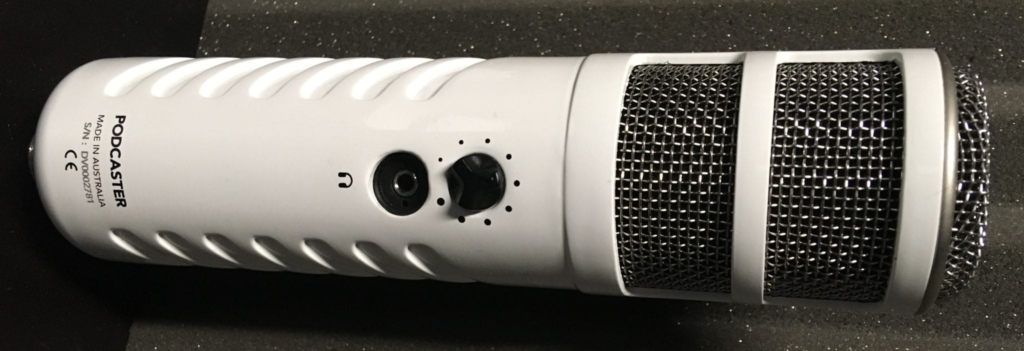
If you like the look of the Rode Podcaster, but would rather opt for an XLR mic so you can plug it into things like mixers or digital recorders, then check out its sister mic – the Rode Procaster.
7. The Blue Yeti
- Average Cost: $130 (check prices on Amazon)
- Connection: USB
- Function: Condenser
- 👍 Pros: A nice-looking mic on its own stand
- 👎Cons: Easy to use incorrectly
Our Rating: 3/5
Whilst the Rode Podcaster is a Dynamic, this next one is a Condenser. The Blue Yeti is one of the most popular USB podcast microphones in the world, and it comes in at around $130.
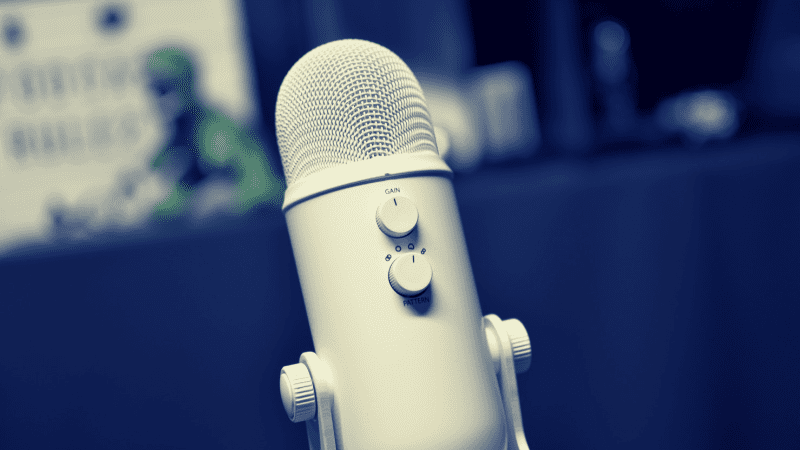
The Blue Yeti offers great quality audio thanks to its condenser capsules. It’s also amazingly easy to use with a plug and play USB connection.
One of its biggest advantages, though, is its range of polar patterns. The Yeti offers settings for solo recording, two-person face to face recording, and group recording. So, it’s flexible and can adapt to just about any situation. For best quality sound, you need to be quite close to the mic, so prepare to get pretty cosy when you’re recording two people or groups.
Lastly, the Blue Yeti comes with its own stand, so it’s a good mic if you want to jump in at the high-end and not have to worry about additional kit. Click here for more info about the Blue Yeti and its various accessories.
The Yeti might not quite match the MXL990 or the Rode podcast mics for sheer quality, but the ease of use and the fact that it’s entirely standalone make it a really serious choice at this level. See our Blue Yeti review for the full lowdown.
8. AKG Lyra
- Average Cost: $150 (check prices on Amazon)
- Connection: USB
- Function: Condenser
- 👍 Pros: One of the best-sounding USB mics out there
- 👎Cons: Limited availability
Our Rating: 4.4/5
The AKG Lyra is a strong competitor to the Blue Yeti, in that it has very similar features, from polar patterns to an in-built stand.
To my ear, it actually sounds better than the Yeti, but it can be harder to pick one up, depending on where you are in the world. If they are available in your region, and you’d like to find out more, then have a read of our full AKG Lyra review.
9. PreSonus PX-1
- Average Cost: $130 (check prices on Amazon)
- Connection: XLR
- Function: Condenser
- 👍 Pros: Great podcast mic for recording voice
- 👎Cons: Needs a well-treated environment
Our Rating: 4.5/5
The PreSonus PX-1 is perfect for anyone looking to own a Large Diaphragm Cardioid Condenser Microphone without breaking the bank. You’ll want an above-average recording environment for this one, so better to opt for something like the Q9U (below) or the Shure MV7 if you tend to podcast from inside the broom cupboard. See our review of the PreSonus PX-1 to get the full lowdown on this great podcast microphone.
10. Samson Q9U
- Average Cost: $120 (check prices on Amazon)
- Connection: XLR & USB
- Function: Dynamic
- 👍 Pros: Versatile, plugs straight into computer, or, into interface or digital recorder
- 👎Cons: Needs a boom arm
Our Rating: 4.5/5
We talked earlier about the Samson Q2U. A newer mic on the market is the Samson Q9U which, like the Q2U, can be used in both USB and XLR form. The Q9U sounds better than the (already good sounding) Q2U and doesn’t cost that much more, either!
11. The Rode NT1-A
- Average Cost: $199 (check prices on Amazon)
- Connection: XLR
- Function: Dynamic
- 👍 Pros: A low-noise microphone
- 👎Cons: Not an overly-durable build
Our Rating: 4.3/5
The Rode NT1-A popped up as a surprise entry in our Gear Stats Survey a couple of years ago. It turned out to be the most popular high-end podcast microphone amongst our respondents. It’s not surprising, really, when you hear the quality it offers, combined with a relatively low price for a mic at this level. You can usually pick one up new for around $200.
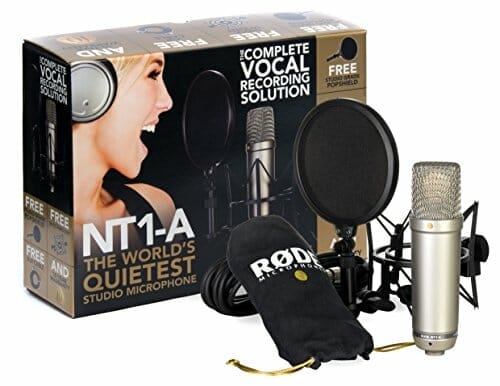
The NT1-A is a super-low noise XLR microphone, with a really rich sound behind it. The pack comes with a shock mount and a pop filter, so all you need is a mic stand and a recorder, audio interface, or mixer to get it up and running.
Fans of the Rode NT1-A might also be interested in the Rode NT-USB Mini. You can plug multiple NT-USB Mini mics into your computer at the same time and record them in multitrack using Rode’s free Connect software. This setup is pretty unique and by far the best way to record with multiple USB mics at the present moment!
Premium Podcast Microphones for Over $200
At this level, we’re starting to look at some serious cash. These are microphones that wouldn’t look out of place in a professional recording studio. These are probably overkill for most podcasters, even if you’re broadcasting to millions. Take Tim Ferriss for example – millions of downloads per episode and still mostly recording on an ATR2100 or an SM58, last time I looked.
12. The Shure SM7b
- Average Cost: $360 (check prices on Amazon)
- Connection: XLR
- Function: Dynamic
- 👍 Pros: One of the highest-quality podcast mics out there
- 👎Cons: Also one of the most expensive, and won’t sound good in less than optimal conditions
Our Rating: 4.8/5
The Shure SM7b is a legendary mic in the industry. It’s one that discerning audiophiles hold in great esteem. And yes, it does indeed live up to the hype.
The problem with the SM7B is that it needs a really professional environment. It picks up a LOT of background noise, and it totally unforgiving with bad mic technique. This will pick up all of your lip smacks, breathing, pops and sibilants, and so you need to know how to deal with them all.
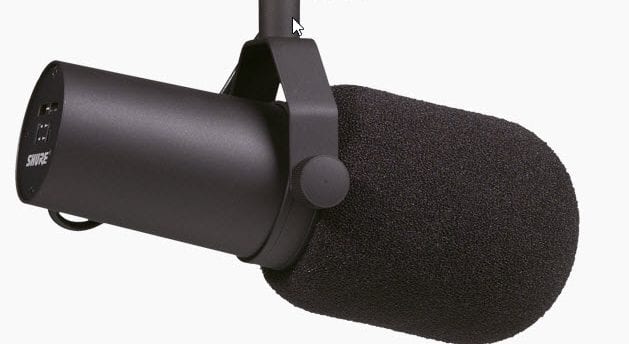
Presuming you can do that, though, and you can afford the cost, this is one hell of a microphone.
And… the Shure MV7
- Average Cost: $250 (check prices on Amazon)
- Connection: XLR & USB
- Function: Dynamic
- 👍 Pros: Similar to the SM7b, but cheaper and more versatile
- 👎Cons: Not the strongest of signals when used in XLR form
Our Rating: 4.7/5
What if I told you that the SM7b had a kid brother, in the form of the Shure MV7? It works as both a USB mic AND an XLR mic, so you can plug it directly into your computer, or, via a USB audio interface or digital recorder. On top of its flexibility, Shure market the mic as offering “perfect sound in imperfect rooms”. If you’re intrigued, check out our review of the Shure MV7 for the full lowdown.
13. The Heil PR40
- Average Cost: $375 (check prices on Amazon)
- Connection: XLR
- Function: Dynamic
- 👍 Pros: Premium sound quality, even in less-than-ideal environments
- 👎Cons: Hard to justify the price
Our Rating: 4.8/5
The Heil PR40 is touted by many high-level showrunners as the go-to podcast mic for anyone who wants the best sound they can get. I won’t deny it’s a good microphone, but I will say it’s a bit overhyped.
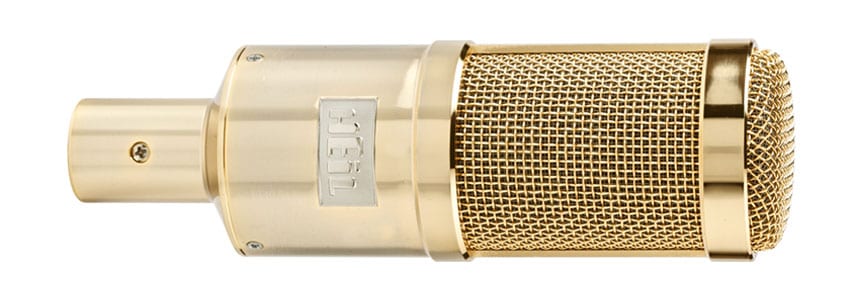
The sound quality is good, and, being a dynamic mic, it’s a great fit for the non-professional environments most of us are recording in. So, if you can get your hands on one to test it out, either borrow or on sale and return, then definitely give it a try.
14. The Electro-Voice RE20
- Average Cost: $450 (check prices on Amazon)
- Connection: XLR
- Function: Dynamic
- 👍 Pros: Amazing sound quality
- 👎Cons: Extremely expensive
Our Rating: 4.9/5
The Electro-Voice RE20 is a mic with a very loyal following… If you know an Electro-Voice fan, you’ll know this to be true!
The EVs are certainly amongst the best microphones in podcasting, or the world of audio in general!
Those who love the EV speak fondly of its rich tones, depth, and resonance. There’s a body to the recordings that’s as memorable as it is undefinable.
You’ll pay for this sound quality, of course. The EV microphones are NOT cheap. But they’re world-class equipment and justify the cost. If you’d like to read more about the mic, and hear some samples, then you can read our Electro-Voice RE20 review here.
The RE20 also has a little cousin in the form of the EV R320 – not a mic we’ve managed to test ourselves before, but a few people we know use it and speak highly of it!
Looking for a Microphone Stand?
Most of the podcast microphones mentioned here will be optimal when mounted on a stand or boom arm. Check out our guide to the best boom arms which offer the most flexible and professional-looking setups for mic mounting and podcast presentation.
Looking for Help With Your Podcast?
Did you know we have courses on all aspects of launching and growing a show over at Podcraft Academy? Not only that, we run weekly Q&A sessions, too, so you can always get the help, advice, and answers that you need!
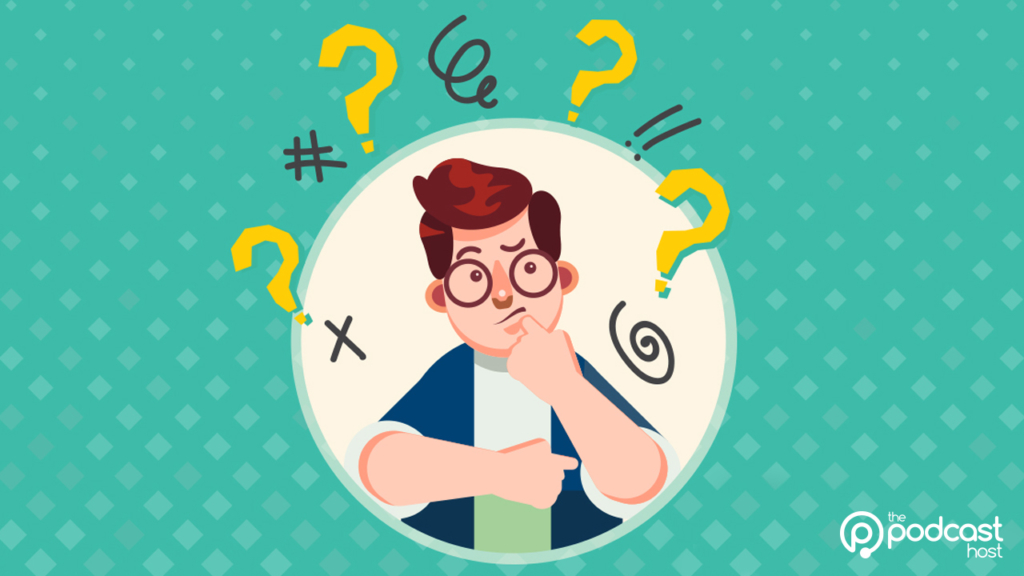
The “Best Podcast Mic For”… FAQ
Here we answer frequently asked questions to help you choose your perfect podcasting microphone.
Let Alitu Take Care of Your Podcast Editing
Alitu is a tool that takes your recording, polishes it up, adds your music, and publishes the episode, all automatically.
Learn more about Alitu
Next Up… Recording
Choosing a podcast microphone means you’ve something to record with. But there are a few additional steps in the recording chain.
Using an XLR mic and need something to plug it into? Here are your 3 options…
And, if you’re recording directly into your computer you might fancy trying out Alitu. Alitu is an all-in-one podcast maker tool that lets you record (solo or remote calls), edit, and publish episodes from directly inside its interface. Alitu does all the production magic (EQ, Noise Reduction, Volume Levelling) for you automatically too, so you can really enhance the sound of your shiny new podcast mic without knowing the slightest bit about audio engineering!
Try Alitu free for 7 days and see for yourself.
















![Toni Kroos là ai? [ sự thật về tiểu sử đầy đủ Toni Kroos ]](https://evbn.org/wp-content/uploads/New-Project-6635-1671934592.jpg)


